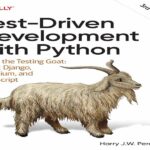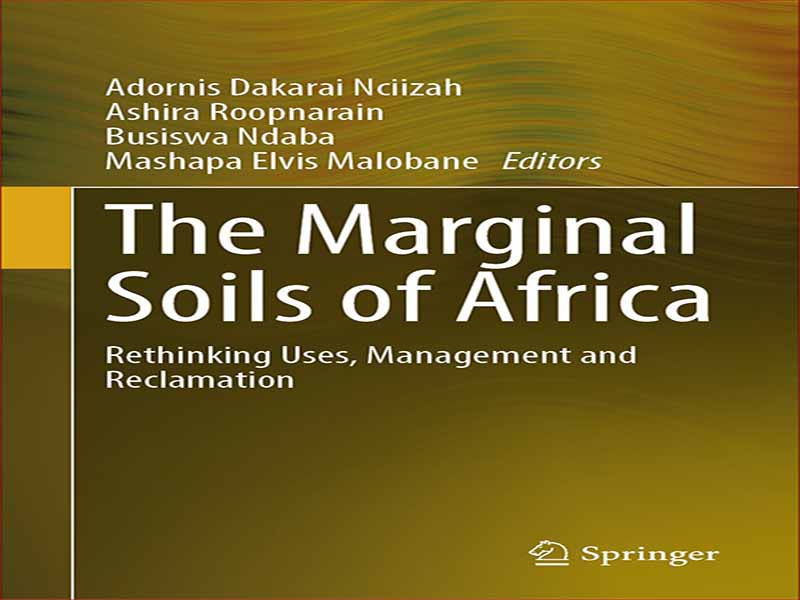- عنوان: The Marginal Soils of Africa / Rethinking Uses, Management and Reclamation
- نویسنده: Adornis Dakarai Nciizah
- حوزه: مهندسی خاک
- سال انتشار: 2022
- تعداد صفحه: 505
- زبان اصلی انگلیسی
- نوع فایل: pdf
- حجم فایل: 20.3 مگابایت
با افزایش جمعیت جهان از 8 میلیارد به 10 میلیارد پیش بینی شده تا سال 2050، اهمیت مراتع طبیعی خشک و نیمه خشک به طور فزاینده ای حیاتی می شود (Alkemade et al. 2013). در حال حاضر، این اکوسیستم ها تقریباً 25 درصد از سطح زمین را پوشش می دهند و از طریق چرای دام و کشاورزی از معیشت بیش از یک میلیارد نفر پشتیبانی می کنند (ون اودنهوون و همکاران 2015). تنها در آفریقا، مراتع تقریباً 65٪ از کل سطح زمین را تشکیل می دهند (Nalule 2010) و انواع کالاها و خدمات اکولوژیکی، فرهنگی، بیولوژیکی و اجتماعی-اقتصادی را ارائه می دهند (Mussa et al. 2016). با این حال، تخریب مراتع یک تهدید جدی در سطح جهانی است، از جمله در جنوب صحرای آفریقا که مانع مدیریت موثر مناطق خشک و نیمه خشک می شود (Mureithi et al. 2014). تقریباً 75 درصد از چراگاه های جهان ظرفیت خود را برای نگهداری دام از دست داده اند (مویو و همکاران 2013) به دلیل محرک های محلی و جهانی تخریب. آفریقای جنوبی به ویژه تحت تأثیر قرار گرفته است، به طوری که تقریباً 70 درصد از سطح زمین آن به دلیل فرسایش خاک تخریب شده است که منجر به حاصلخیزی و بهره وری ضعیف خاک می شود (Le Roux et al. 2007). قابل توجه است که علفزارها و ساواناها در مقایسه با زمینهای زراعی و مناطقی با ترکیبی از پوشش گیاهی و محصولات طبیعی در مناطقی مانند آرژانتین، جنوب آفریقا و استرالیا، از دست دادن قابلتوجه کربن آلی خاک (SOC) را تجربه کردهاند. احیا و حفاظت از این مراتع برای تضمین تداوم ارائه خدمات ضروری و حمایت از هر دو اکوسیستم و جوامع وابسته به آنها در مواجهه با رشد جمعیت در آینده بسیار مهم است. با این حال، آفریقای جنوبی کشوری با تضادهای شدید است، به طوری که 80 درصد از این کشور به عنوان خشک تا نیمه خشک، با میانگین بارندگی 450 میلی متر در سال، در مقایسه با میانگین جهانی 910 میلی متر در سال (Alkemade et al. 2013). گزارش ملی آفریقای جنوبی در مورد تخریب زمین (NRLD؛ Wessels et al. 2007) نشان می دهد که تخریب مراتع در زمین های مشترک و تکه های کوچک زمین های تجاری شدید است. اگرچه بهره وری مرتع و انعطاف پذیری در برابر تنوع زیست محیطی تابعی از سلامت خاک و تنوع عملکردی میکروبی است (Plassart et al. 2008)، اثرات مدیریت مرتع و تغییر کاربری اراضی بر تخریب زمین و بهره وری کشاورزی به خوبی شناخته نشده است (UN 2011). این به این دلیل است که بیشتر توابع خاک نسبت به ویژگی های زیستی مانند ساختار و تنوع پوشش گیاهی کندتر بهبود می یابند و در نتیجه به ندرت اندازه گیری می شوند (Ruiz-Jaen and Aide 2005). با این حال، اکوسیستمهای کشاورزی که شامل چرا میشوند، زمانی که خاک از نظر بیولوژیکی کاملاً کاربردی باشد، مولد، پایدار و انعطافپذیرتر هستند و درآمد بیشتری و خدمات اکوسیستمی فراوانتری ارائه میکنند (Teague et al. 2013). نظارت بر اثرات شیوههای مدیریت چرا بر کیفیت خاک (SQ) برای اطمینان از پایداری سیستمهای چرا ضروری است (Amorim et al. 2020).
With the world population expected to grow from 8 billion to a projected 10 billion by 2050, the signi_icance of natural arid and semiarid rangelands becomes increasingly crucial (Alkemade et al. 2013). Currently, these ecosystems cover approximately 25% of the Earth’s land surface, supporting over one billion people’s livelihoods through livestock grazing and agriculture (van Oudenhoven et al. 2015). In Africa alone, rangelands account for approximately 65% of the total land surface (Nalule 2010), and provide a variety of ecological, cultural, biological, and socio-economical goods and services (Mussa et al. 2016). However, rangeland degradation poses a serious threat globally, including in sub-Saharan Africa impeding the effective management of arid and semi-arid areas (Mureithi et al. 2014). Approximately 75% of the world’s grazing land has already lost its capacity to sustain livestock (Moyo et al. 2013) due to local and global drivers of degradation. South Africa has been particularly impacted, with approximately 70% of its land surface degraded caused by soil erosion resulting in poor soil fertility and productivity (Le Roux et al. 2007). Notably, the grasslands and savannas have experienced substantial loss of soil organic carbon (SOC) compared to croplands and areas with a mix of natural vegetation and crops within regions like Argentina, southern Africa, and Australia. The restoration and conservation of these rangelands are of utmost importance to ensure the continued provision of essential services and support for both ecosystems and the communities that depend on them in the face of future population growth. However, South Africa is a country of extreme contrasts, with 80% of the country de_ined as arid to semi-arid, with an average rainfall of 450 mm per annum, compared to a world average of 910 mm per annum (Alkemade et al. 2013). The South African National Report on Land Degradation (NRLD; Wessels et al. 2007) indicates that rangeland degradation is severe on communal lands and small patches of commercial lands. Although rangeland productivity and resilience to environmental variability are a function of soil health and microbial functional diversity (Plassart et al. 2008), the effects of rangeland management and land-use change on land degradation and agricultural productivity remain poorly understood (UN 2011). This is because most soil functions recover slower than the biotic attributes such as vegetation structure and diversity, and consequently, they are only rarely measured (Ruiz-Jaen and Aide 2005). However, agro ecosystems that include grazing are more productive, stable and resilient when the soil is fully functional biologically, and they provide greater earnings and more abundant ecosystem services (Teague et al. 2013). Monitoring the impacts of grazing management practices on soil quality (SQ) is essential to ensuring the sustainability of grazing systems (Amorim et al. 2020).
این کتاب را میتوانید بصورت رایگان از لینک زیر دانلود نمایید.
Download: The Marginal Soils of Africa





































نظرات کاربران